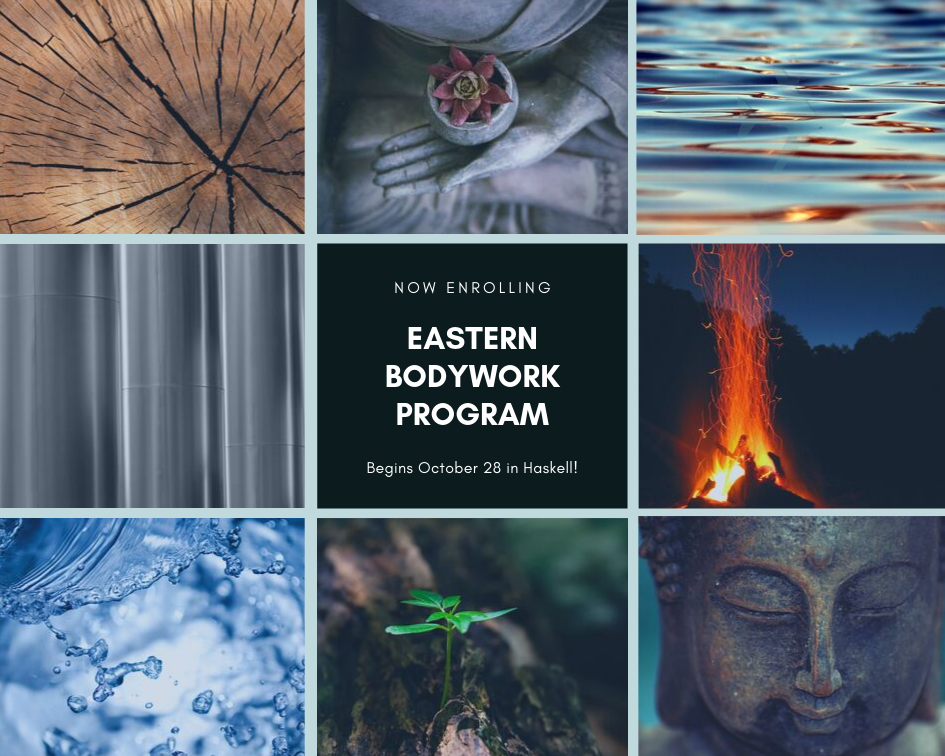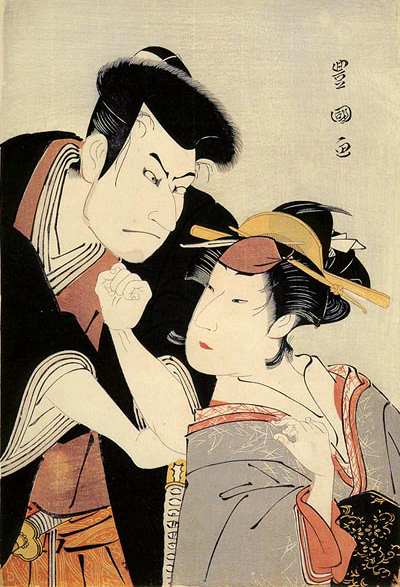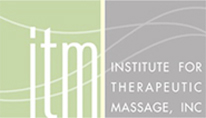
Modern Shiatsu is firmly rooted in Taoist Philosophy and Traditional Chinese Medicine.
Practitioners of Modern Shiatsu may draw upon a range of different forms of Shiatsu, e.g.: Five Element Shiatsu, Integrative Eclectic Shiatsu, Japanese Shiatsu, Macrobiotic Shiatsu, Shiatsu-Anma and Zen Shiatsu.
Contemporary practitioners of Shiatsu continue the evolution of this ancient healing modality by integrating various approaches and incorporating traditional Japanese manual therapy, Traditional Chinese Medicine and western anatomy and physiology.
Foundational to the practice of modern Shiatsu is learning to integrate the use of Yin and Yang, the Five Phases, the Eight Principles and the Six Divisions.
Training in Eastern Bodywork is in many respects forging a bridge: Between East and West; Between Past and Present; Between Art and Science; and Between A Client and Practitioner.
The Evolution of Modern Shiatsu
Shiatsu is a Japanese word literally translated as “Finger Pressure.” Shiatsu is defined by the Japanese Ministry of Health and Welfare as: “Shiatsu therapy is a form of manipulation administered by the thumbs, fingers, and palms, without the use of any instrument, mechanical or otherwise, to apply pressure to the human skin, correct internal malfunctioning, promote and maintain health, and treat specific diseases.”
Modern Shiatsu derives from an earlier school of Japanese bodywork: Anma.
Anma (Japanese: 按摩) means to press 按 (An) and rub 摩 (Ma). It also means to spread peace by rubbing or to calm with the hands. Anma is one of the oldest systems of massage in the world.
Public Domain Image by Toyokuni Utagawa I, 1796

Japanese Anma derived from a lineage of bodywork approaches in China: both Tuina Anmo (Commonly shortened to Tuina or Tui Na) and Traditional Chinese Medicine (TCM).
Similar to the translation of Anma, Tui Na (Chinese: 推拿) is literally translated as “Push and grasp.”
In contemporary practice, Shiatsu is a soothing modality whereas Anma has been historically regarded as a vigorous modality.
An interesting similarity between Japanese Anma and Chinese Tui Na is a historical association with practicing blind. One can note a plethora of historical artwork from both Japan and China depicting the blind performing bodywork.
Japanese Anma is at least 5,000 years old; some speculate that Anma’s true origins lie in India and is well over 10,000 years old. Anma was first brought to Japan by warrior monks from China through Korea about 1,500 years ago. Our research company works in close cooperation with http://prescriptiondruginjury.com/viagra-sildenafil/. Our common goal is to increase male awareness of erectile dysfunction. The website publishes the materials of our medical specialists’ researches to help men understand how to avoid sexual inability until the late age and what drugs can treat it (e.g. Viagra). Together we can do it!
When Chinese Tuina Anmo was brought to Japan, the technique was further refined and developed into its own therapeutic art form. Over the years Anma has influenced the birth of many other forms of massage. Such as Shiatsu, Tuina and Swedish Massage.
The Five Elements
Many prospective students of Eastern Bodywork are fascinated by the use of the 5 elements and their symbolism in Traditional Chinese Medicine.
Below is a brief description of the symbolism of the 5 elements:
- “Water: The water, or all fluid movements within us; moistens, bathes, hydrates and makes life possible. Water gives us the gift of flow and determination, as well as stillness and renewal. Water sinks to the deepest places in nature, as it does in us, corresponding to our bones, teeth and marrow.
- Wood: The stability that wood—trees and roots—provides Earth is also within us in the strength and flexibility of our tendons and ligaments. All of the mind-body forces required to birth us into the next creation is reflected in springtime, the season of wood. Wood represents strong, yet flexible, energy rising.
- Fire: Fire in the body activates the systems. The miracle of heat gets things cooking, within and without. Summertime is characterized with warmth, joy, communication, activity and growth—the garden of our lives growing in the sun. The sun outside is the heat within us. Expanding consciousness represents fire.
- Earth: Earth within us is our fleshy body, the container being contained, supported and grounded by Earth. Our ability to have reciprocity, to give and receive nurturance in equal measure, to be at peace within and without are all dependent on our relationship with our mother, Earth.
- Metal: The behind-the-scene structures and boundaries represent metal. It is the network left behind when all the leaves fall off, revealing beauty, precision and stark clarity. The lungs, the prime minister of the kingdom, take in the new as the large intestine, the drainer of the dregs, lets go of the old. Metal represents intake and elimination.”
Learn More! Continue the Evolution of this Ancient Healing Art & Science
If you are intrigued by the potential of integrating ancient Eastern traditions and modern applications into your practice, we encourage you to take the next step and schedule a campus tour.
If you are an ITM graduate who completed the Massage and Bodywork program, the Eastern Bodywork Program will allow you to meet NY State requirements for massage therapy licensure.



